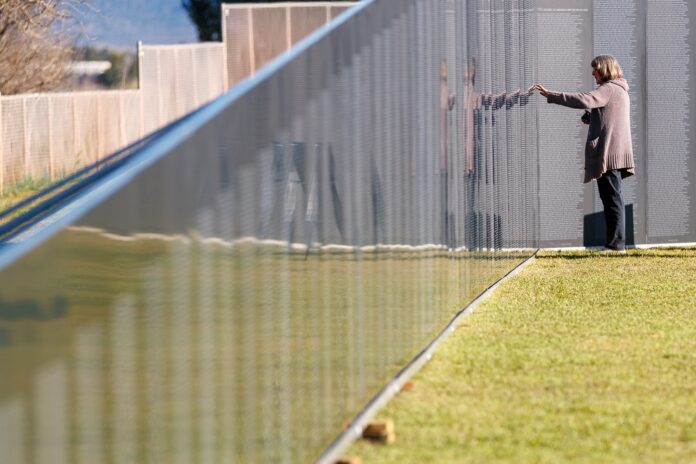March 29 marks the 50th anniversary of the formal withdrawal of U.S. troops from Vietnam, officially ending U.S. involvement in what was at the time America’s longest war.
The Second French Empire invaded Cochinchina — what is now the southern third of Vietnam — in 1858 and annexed the region in 1862. French troops then conquered Cambodia, Laos and the Vietnamese regions of Annam and Tonkin, consolidating the five areas into the Indochinese Union. The French defeat by Nazi Germany in 1940 gave the green light to Imperial Japan to use collaborationist Vichy French territories as bases for its expansion into the South Pacific.
Despite opposition from American leaders, France reoccupied Indochina after Japan’s surrender in 1945, prompting resistance from Vietnamese nationalists and communists who had cut their teeth fighting the Japanese. The French lost the First Indochina War and withdrew after the Battle of Dien Bien Phu in 1954, when Viet Minh forces overran French positions and captured more than 11,000 prisoners of war.
The subsequent Geneva Conference divided the country into two zones along the 17th parallel of north latitude: A communist North Vietnam and a Western-aligned authoritarian regime in South Vietnam.
U.S. troops entered the country in 1956 as military advisors to the South Vietnamese government, and the American government later stepped up its involvement as North Vietnamese infiltrators began assassinating South Vietnamese officials and recruiting fighters into the Vietcong insurgency. The 1964 Gulf of Tonkin Resolution — the rationale for which was later revealed to be dubious — and the 1968 Tet Offensive led to further escalation by U.S. military planners. They proposed a “domino theory” in which one country after another across Southeast Asia would first be infiltrated by communist insurgents, then fall to a communist government in a pattern of regime change expected to stretch from China to Vietnam to Laos, Cambodia, Thailand, Burma and eventually India, the crown jewel of democracy in the region.
However, domino theory was a bit too simplistic an understanding of contemporary geopolitics, not taking into account the social, political, cultural and ethnic differences of Southeast Asian countries. The theory was predicated on the Eurocentric belief that Southeast Asian countries were not as sophisticated as their Western colonial overlords and would be unable to resist communist systems by indigenous means, as Thailand did, or would simply reject them, as Burma and Cambodia did, in favor of nationalist autocracies.
American opposition to the war was accelerated by student protests and by the rise of nightly news media that broadcast the war live into American homes for the first time. World War II and the Korean War were experienced by American civilians through heavily curated newsreels narrated by U.S. Army, U.S. Navy and other government officials, but news broadcasts from Vietnam included often gruesome footage from the front lines and details about casualties.
It is much easier for a nation to fight a war when the goal includes reaching a line on a map rather than just preventing an insurgency. Unlike World War II and the Korean War, which had clear goals and territorial demarcations, the purpose of the war in Vietnam was nebulous. Even enemy combatants killed or tons of bombs dropped couldn’t be used as concrete measures of the war’s success or failure.
The draft, which placed Americans in combat whether they wanted to go or not, also made the war deeply unpopular. Unable to direct their anger at an administration that was largely indifferent, many Americans opposed to the war directed their anger at the soldiers who served, even though many had no choice about whether they wanted to put on a uniform.
The American military has always drawn its numbers primarily from poor and working-class communities whose members both view military service as a duty and are often recruited to serve by the promise of government benefits like help with college tuition and loans for home ownership once they complete their service.
While thousands benefited from these government services, thousands also returned home wounded or suffering from battlefield trauma. Rather than being demobilized in large-scale, staged unit discharges, U.S. soldiers returned home piecemeal, often to indifferent or hostile receptions at airports and seaports, leading many Vietnam veterans in the years and decades since to hide the fact that they fought at all.
After the U.S. withdrew from South Vietnam in 1973 and the country fell to a North Vietnamese offensive in 1975, Americans and their politicians treated the war as a failed intervention. Vietnam veterans often bore the blame for this and many still are reluctant to discuss their service.
The war’s nebulous status — the United States never officially declared war — also left many veterans feeling isolated from civilians who didn’t serve and did not appreciate their service. Some 57,939 Americans died or went missing during the war and some 2 million Vietnamese civilians a 1 million Vietnamese soldiers from both sides died.
Beginning in 2010, U.S. states began passing legislation recognizing March 29 as a date to honor Vietnam veterans, with Arizona doing so in 2014. In 2017, the day was recognized by federal law. As we covered last week, a traveling Vietnam Memorial has been installed in Camp Verde and will be open to visitors 24/7 until 3 p.m. on Sunday, April 2, if you served or want to honor someone who did.



